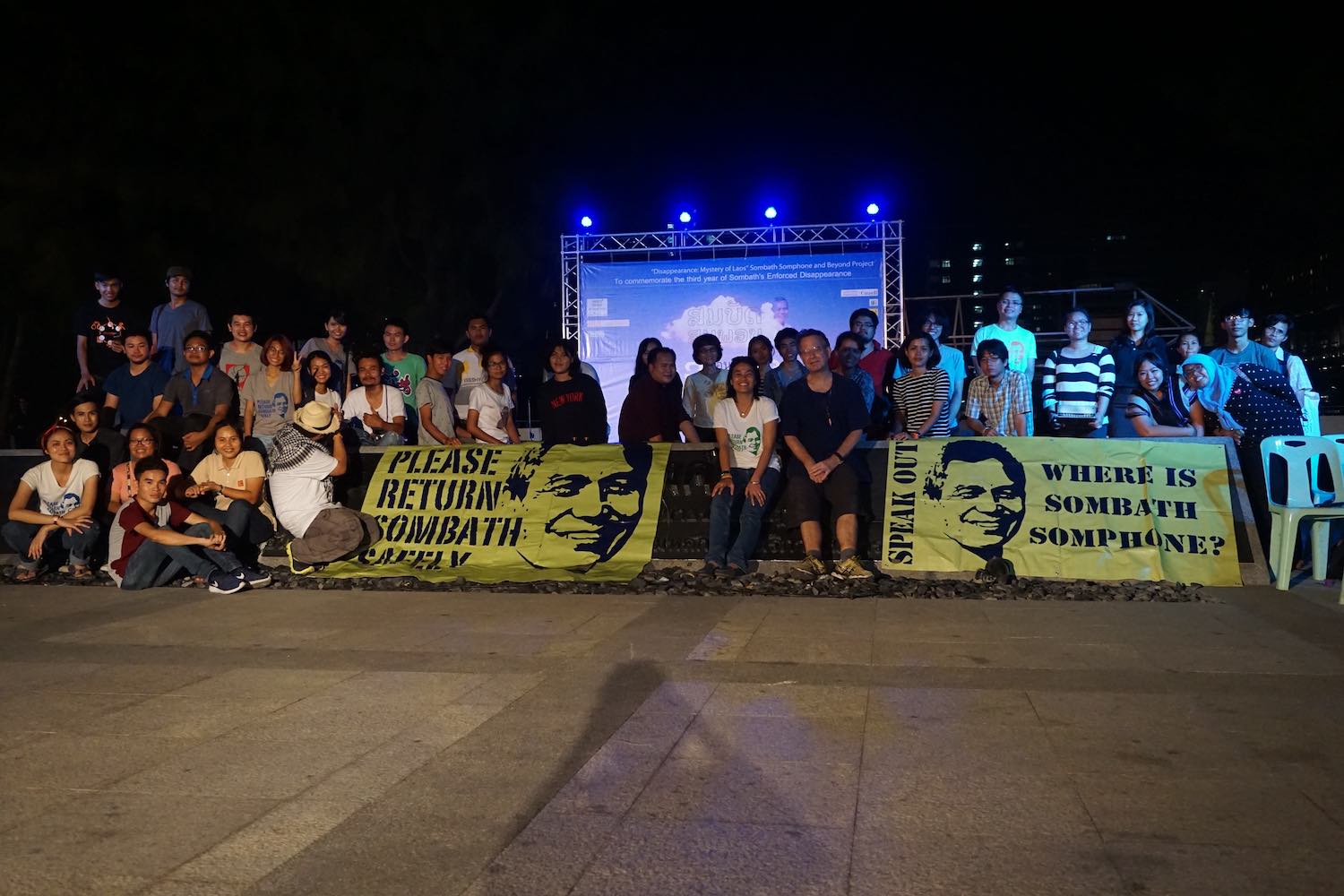Radio Free Asia: 14 June 2013
The mystery behind the disappearance of respected civil society leader Sombath Somphone in Laos has deepened amid claims by rights group Amnesty International that a gunshot was fired as he was taken away from a police post in a pickup truck by unidentified men six months ago.
Amnesty described it as a “concerning” development which has so far not been mentioned in media reports and statements around Sombath’s disappearance on the night of Dec. 15, when police-recorded surveillance video showed him being stopped at a police post in the Lao capital Vientiane.
Lao authorities have reported little progress on the 60-year-old community worker’s case amid concerns for his safety by fellow activists—some of whom fear that his disappearance could be tied to his human rights work and that he may have been abducted by security groups linked to the government.
The Lao government has turned down international requests to provide any assistance in the investigations, including a U.S. offer to provide technical help to enhance the quality of some blurry images of the vital video footage on Sombath’s last known moments.
Based on Amnesty’s new analysis of the closed circuit television (CCTV) footage, a person riding in the back of a motorcycle ahead of a pickup truck carrying Sombath appeared to fire a shot in the air before speeding away from the police post, Amnesty said in its “Caught on Camera” report.
“The apparent gunshot may have been fired as a warning to witnesses, as a signal for the pickup truck carrying Sombath to leave immediately, or for another reason,” it said.
“The fact that this man is armed may also explain why Sombath did not struggle to avoid being taken away, although those who know Sombath say that he would have tried to discuss the situation peacefully to find a resolution, rather than resist,” the report said.
‘Enforced disappearance’
Amnesty and U.S.-based Human Rights Watch believe Sombath is a victim of “enforced disappearance” —defined under international law as the arrest or detention of a person by state officials or their agents followed by a refusal to acknowledge the deprivation of liberty, or to reveal the person’s fate or whereabouts.
“Based on the evidence, the most plausible conclusion is that Sombath Somphone is a victim of an enforced disappearance, for which Lao officials are responsible,” said Rupert Abbott, Amnesty International’s Researcher on Cambodia, Laos, and Vietnam.
“The fact that Sombath was taken from a police post in the center of Laos’ capital city and that the police there did nothing to resist raises very serious concerns,” he said.
Abbott termed the Lao police’s proposition that the situation was “normal” as “absurd,” when considering the facts, including that a gun appears to have been fired at the scene.
“The Lao authorities’ likely involvement in Sombath’s disappearance is further compounded by the failure of the police to conduct thorough investigations, which suggests a cover-up,” he said.
The United States meanwhile chided Laos for not adequately responding to repeated inquiries by the international community into Sombath’s disappearance.
“This calls into question Laos’ aspiration to become an internationally respected, rule-of-law-based society,” a U.S. State Department official told RFA, speaking on condition of anonymity.
The official said the United States is “highly concerned for Mr. Sombath’s well-being” and called upon the Lao government “to do everything in its power to ensure his immediate return home to his family.”
Washington also expressed regret over the latest statement on June 7 by the Lao authorities on the investigations into the case, saying it did not provide additional information about the probe.
“We urge the Lao government to pursue all leads to find the whereabouts of Mr. Sombath,” the U.S. State Department official said.
Personal or business reasons?
Four days after Sombath’s disappearance, the Lao Ministry of Foreign Affairs issued a statement confirming the incidents recorded on the security camera —without any gunshot—but claimed that Sombath had been kidnapped for personal or business reasons.
“After six months, the Lao government’s failure to explain the abduction of a prominent social activist at a police checkpoint or account for his whereabouts raises the gravest concerns for his safety,” said Brad Adams, Asia director at Human Rights Watch.
“The Lao authorities should realize their cover story is fooling no one, and start telling the truth,” he said.
Human Rights Watch said there was no indication that the Lao authorities had made any follow-up inquiries into the actions recorded on the police security video.
It called on member states of the Association of Southeast Asian Nations (ASEAN), to which Laos belongs, to publicly raise their concerns about Sombath’s “enforced disappearance.”
Human Rights Watch had sent a letter to each of the national commissioners of the ASEAN Inter-governmental Commission on Human Rights (AICHR) calling for them to investigate the case, saying the group’s terms of reference give it the right “to obtain information from ASEAN member states on the promotion and protection of human rights.”
Human Rights Watch said it has not received a response from any of the commissioners or the ASEAN Secretariat in Jakarta.
Strong opposition
Brunei and Thailand attempted to raise Sombath’s disappearance for discussion at the AICHR, but those efforts were strongly opposed by other national commissioners, including Laos, sources who were at the meeting told Human Rights Watch.
“The silence of ASEAN’s human rights commission about Sombath’s case reflects this body’s fundamental inability to protect human rights,” Adams said.
“Instead of trying to help the victims of abuses, ASEAN has chosen to hide behind the excuse of ‘non-interference’ and let human rights violations continue with impunity.”
Reported by RFA’s Lao Service. Written in English by Parameswaran Ponnudurai.
